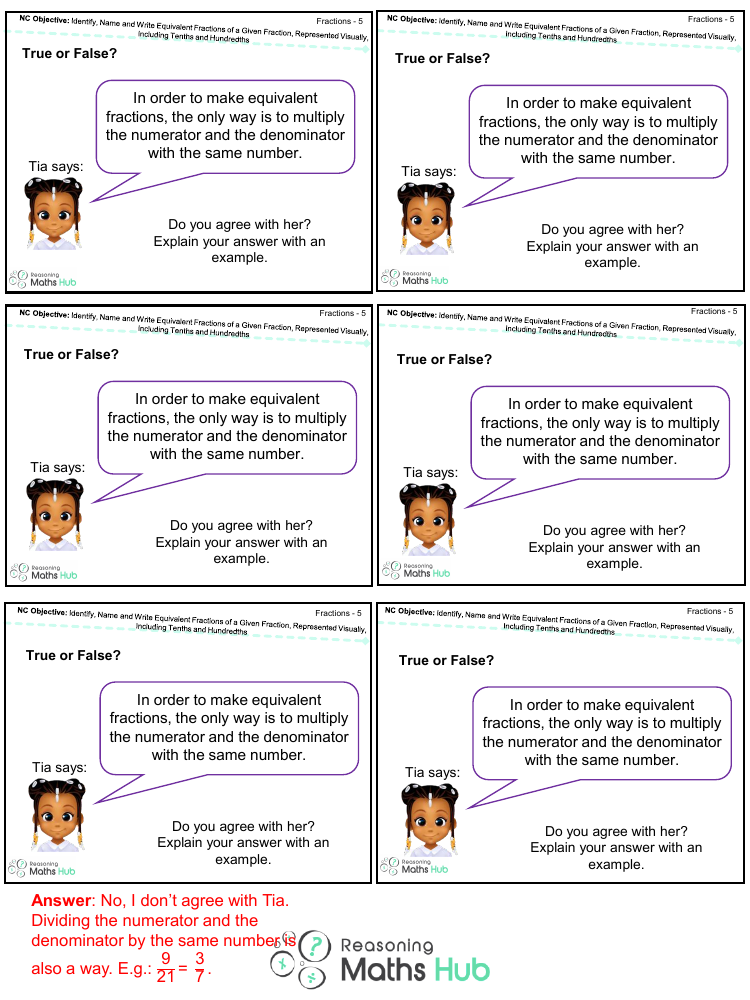Identify, Name and Write Equivalent Fractions of a Given Fraction, Represented Visually, Including Tenths and Hundredths - Reasoning

Maths Resource Description
The statement made by Tia, that the only method to create equivalent fractions is by multiplying both the numerator and the denominator by the same number, is not entirely accurate. While it is true that multiplying the numerator and denominator by the same non-zero number will produce an equivalent fraction, it is not the only way to achieve this. Equivalent fractions can also be found by dividing the numerator and denominator by their common divisor. This process is known as simplifying or reducing a fraction.
For example, consider the fraction 9/21. If we divide both the numerator (9) and the denominator (21) by their common divisor, which is 3, we get 3/7. Both fractions represent the same proportion of a whole, meaning that 9/21 is equivalent to 3/7. Therefore, Tia's assertion is false because equivalent fractions can be made by dividing as well as by multiplying. This understanding is fundamental in grasping the concept of equivalent fractions and is crucial for working with fractions in various mathematical contexts.
